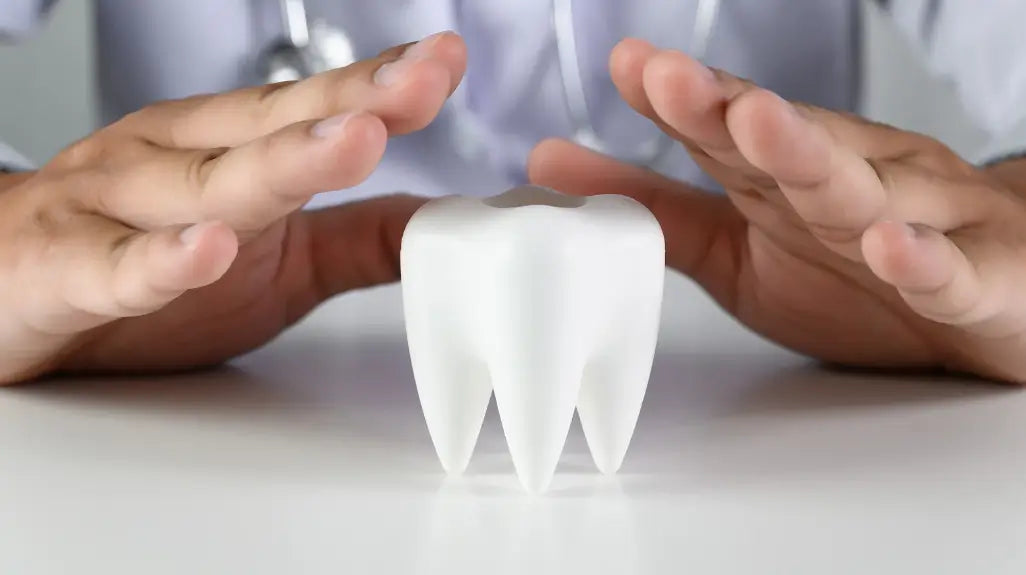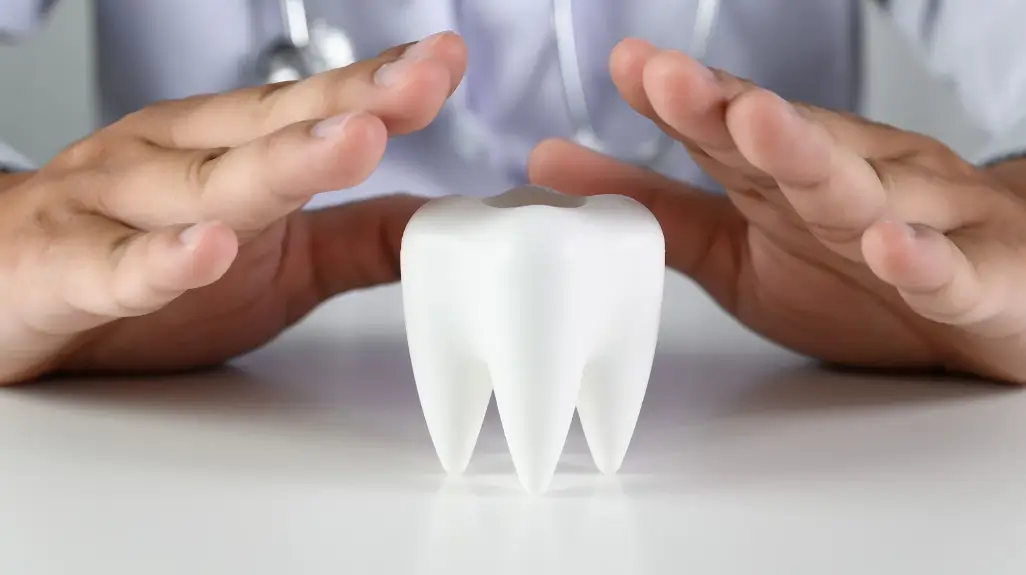Proper and regular oral care is essential for maintaining healthy teeth and gums. It’s also important to visit a dental hygienist from time to time. If you’re unsure about what dental hygiene entails, whether the treatment is painful, or how to prepare for a visit to the dental hygienist, don’t worry. In the following lines, we’ll explain not only what dental hygiene is but also how to brush your teeth correctly so you can avoid any fear of painful procedures.
What is Dental Hygiene?
The history of dental hygiene as a field dates back to ancient Rome. However, in the Czech Republic, it is a relatively young non-medical discipline that began to be taught nearly thirty years ago, in 1996. Since then, it has become increasingly recognized and valued.
The primary goal of dental hygiene, besides treating teeth, is the prevention of tooth decay, gum disease, periodontal disease, and education in oral hygiene. Prevention involves removing impurities and deposits from the teeth, such as dental plaque, tartar, and tooth discoloration.
It’s important to note that dental hygiene isn’t just about visiting a dental hygienist’s office. It also includes at-home oral care, which, in some respects, is even more critical than professional dental hygiene, which you typically undergo only a few times a year.
How Does Dental Hygiene Work?
A dental hygienist professionally cleans your teeth of tartar and then polishes them. During the process, they will demonstrate proper oral hygiene techniques and observe how you brush your teeth, making any necessary adjustments to prevent you from harming your teeth with improper techniques. The work of a dental hygienist can be divided into four basic areas:
- Education: Patients receive information on proper oral hygiene, including the correct brushing technique and practice. They also learn about foods and drinks that are either beneficial or harmful to dental health.
- Prevention: The hygienist will ask about your medical history, examine your oral cavity, assess the condition of your teeth, and clean them.
- Therapeutic Care: This includes fissure sealing (sealing small crevices in the teeth) and fluoride treatment.
- Aesthetics: You can visit a dental hygienist for aesthetic purposes as well. Common procedures include cleaning, sandblasting, or whitening the teeth. The hygienist can also enhance the appearance of your teeth by applying decorative gems.
Does Dental Hygiene Hurt?
Tartar Removal
Visiting a dental hygienist is crucial for tartar removal. While this procedure may not be the most pleasant, if you have healthy teeth and maintain a regular and thorough cleaning routine, the treatment will likely be quick and painless.
If you experience pain during every visit to the dental hygienist, it’s probably because you’re not taking proper care of your teeth. Inadequate and irregular oral care leads to the formation of dental plaque, which over time mineralizes and transforms into tartar.
Tartar is hard and cannot be removed with just a toothbrush. Unremoved tartar and large amounts of plaque cause gum inflammation, which is why dental hygiene treatments can be painful. The irritation of inflamed gums by dental instruments often results in bleeding.
In these cases, ultrasonic cleaning devices provide a solution. Known for their high efficiency, gentleness, and speed, they are favored by dental hygienists. Their popularity is growing not only among professionals but also among home users. The Watersonic ultrasonic cleaner is a home-use device that stands out with its water cooling feature.
Ultrasonic cleaning represents a modern and painless way to remove tartar. Compared to scrapers, it is faster, simpler, gentler on tooth enamel, and can remove more tartar at once.
Teeth Whitening
Are you visiting a dental hygienist to get whiter teeth? This visit can also be unpleasant or painful, especially if you have sensitive teeth.
Achieving a whiter appearance of teeth can be done through a procedure called air polishing or airflow. This method removes pigmentation from the teeth, which creates a yellowish or grayish coating, and large amounts of plaque, even in hard-to-reach places. It works on the principle of compressed air, water, and specially modified sodium bicarbonate. However, this is not tooth whitening – airflow does not change the tooth’s pigment but removes stains caused by substances like coffee, wine, or smoking.
Wondering if air polishing damages your teeth? It doesn’t. However, this method can be quite uncomfortable or painful, especially for people with sensitive teeth, due to its abrasive nature. It is also not suitable for patients with asthma or chronic bronchitis, as the airborne powder can exacerbate their condition.
Do you want a beautiful white smile but find traditional whitening at a dental clinic too painful due to sensitive teeth? Don’t worry; there are many alternative ways to whiten your teeth without using peroxide.
Whitening Products with Peroxide
Peroxide whitening is highly effective and results are often noticeable. However, it is a relatively risky method. For professional tooth whitening at a dental clinic, hydrogen peroxide or carbamide peroxide mixtures are commonly used.
Peroxide-Free Whitening for Sensitive Teeth
Why risk damaging your tooth enamel when there are alternative whitening products without peroxide? From toothpastes and whitening correctors to whitening kits, the selection is broad. Peroxide-free whitening products are ideal for people with sensitive teeth. We have described various products offering painless teeth whitening in our article on home teeth whitening without peroxide.
For painless local whitening, such as a single spot or dark areas between teeth, a whitening pen is useful. Have you already undergone traditional whitening and want to prolong the whiteness of your teeth? Try a whitening corrector, which works similarly to purple shampoo by neutralizing yellow tones.
For overall stain removal, consider a non-abrasive whitening powder, whitening strips, a two-phase stain remover that also helps identify plaque on your teeth, or a complete whitening kit, which includes popular LED lights and UV light.
How Long Does Dental Hygiene Take and How Often Should It Be Done?
On average, a dental hygiene visit lasts about an hour. However, the duration can vary significantly depending on the condition of your teeth. If your teeth are heavily soiled, the visit can take up to twice as long.
The frequency of these visits also depends on the state of your oral health. For people with healthy and clean teeth, visiting once or twice a year for professional cleaning is usually sufficient. In contrast, those with neglected teeth may need to schedule more frequent appointments.
How to Brush Your Teeth Properly
To ensure that your visits to the dental hygienist are as painless as possible, it’s crucial to maintain proper tooth brushing habits. Neglecting your oral care can make not only your first visit to the dental hygienist painful but subsequent visits as well. Improperly cleaned interdental spaces can lead to gum inflammation, making them painful to touch and prone to bleeding when using an interdental brush.
Even regular visits to the dental hygienist won’t guarantee tartar-free teeth. Dental plaque can mineralize and turn into tartar within just 2-3 days. Therefore, regular brushing is essential.
The foundation of proper tooth brushing is using the right toothbrush.
A toothbrush is crucial for mechanically disrupting the structure of dental plaque. Only then can toothpaste and mouthwash be effective. Active ingredients cannot penetrate the solid structure of dental plaque.
-
Toothbrush Head: The head should be small (approximately 2.5 cm) to reach hard-to-access areas of the teeth.
-
Bristles: Opt for soft bristles, as overly hard bristles can damage both soft and hard tissues. Extra soft bristles are suitable in cases of painful inflammation or post-surgery.
-
Bristle Tips: The bristles should be rounded to avoid damaging tooth enamel and it’s preferable if they are cut straight.
By using a suitable toothbrush and maintaining regular brushing habits, you can prevent the buildup of plaque and tartar, leading to healthier teeth and gums and less painful dental visits.
Tooth Cleaning Techniques
The method of cleaning is crucial. There are several techniques for brushing teeth, such as the Charters method, the Stillman method, and the Bass method, which is most frequently recommended by dental hygienists. The Bass method is suitable for both healthy gums and those suffering from gum disease or periodontal issues.
The Bass technique involves placing the bristles of the toothbrush at a 45° angle along the gum line. Next, gently press the brush and use small, vibrating movements. These vibrations help disrupt and remove plaque accumulated on the teeth. Start by cleaning the outer surfaces of the teeth, then move to the inner surfaces, and finally clean the chewing surfaces.
Regardless of the technique you choose, the most important factors are regularity and thoroughness in cleaning all tooth surfaces. Ideally, you should brush your teeth twice a day for at least two minutes each time.
How to Overcome the Fear of Dental Hygiene
Approximately 5-10% of the population suffers from severe anxiety about dentists, known as dentophobia. More accurately, this fear is related to dental procedures in general, which unfortunately extends to dental hygiene treatments as well. The problem arises when individuals avoid any dental check-ups altogether.
Regular visits to both a dentist and a dental hygienist are crucial for maintaining the health of your teeth and gums. Neglecting oral care not only leads to cavities but can also result in serious health issues.
Untreated teeth accumulate significant amounts of plaque, creating an ideal environment for pathogenic microorganisms. Their overgrowth threatens oral health, causing cavities and inflammatory conditions of the soft tissues in the mouth. Subsequently, bacteria can enter the bloodstream, potentially leading to cardiovascular diseases, brain inflammation, or kidney inflammation.
The reasons for this intense fear can vary. Common causes include traumatic experiences from past dental treatments, often stemming from childhood, as well as feelings of insecurity and loss of control. While there is no one-size-fits-all solution to overcoming the fear of the dentist, patients often find that being well-informed about the dental hygiene process or having procedures broken down into smaller steps can help alleviate their anxiety.



